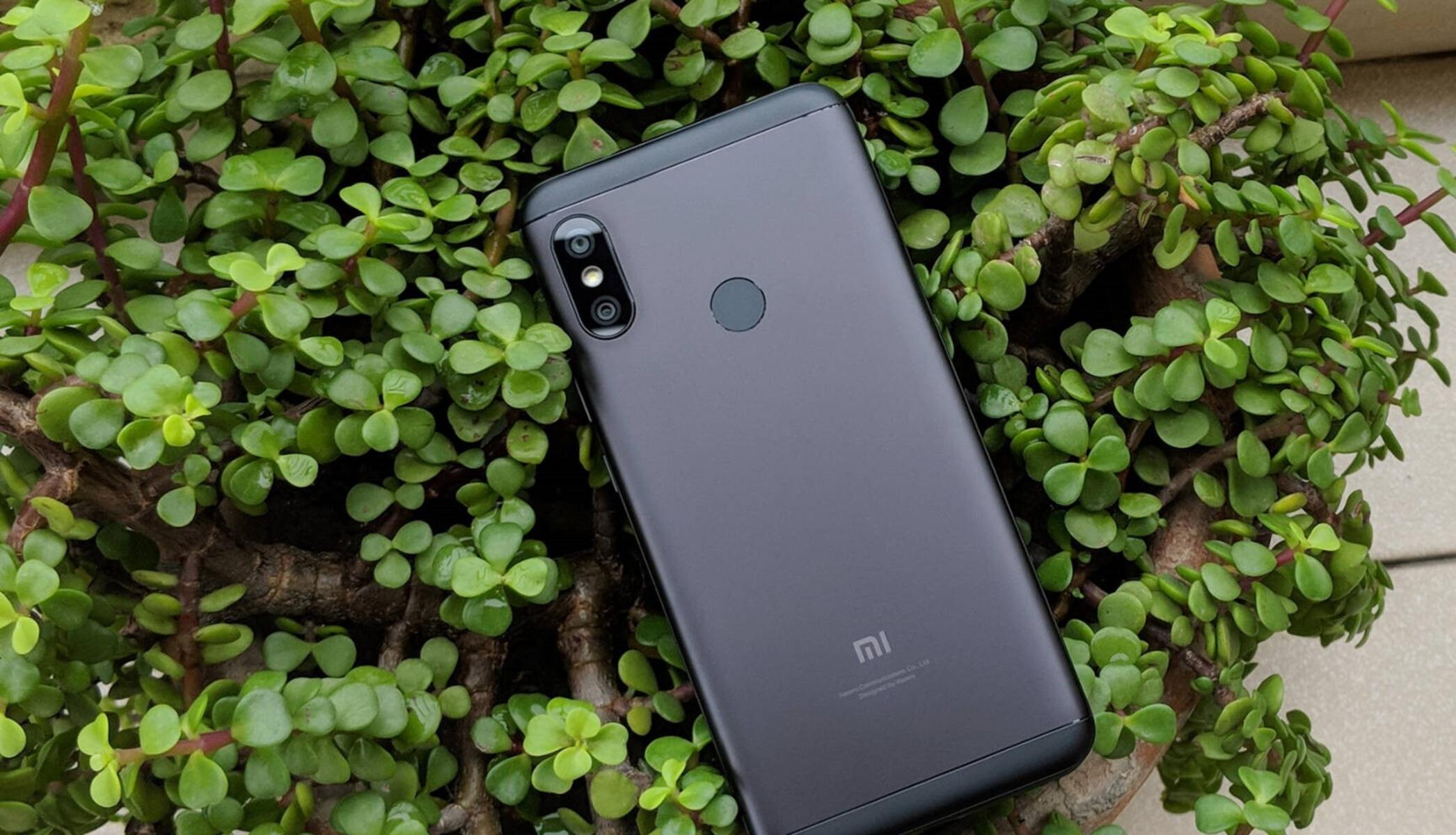Introduction
Welcome to the world of Xiaomi Note 3, a sleek and powerful mobile device that has captured the hearts of tech enthusiasts and casual users alike. As you delve into the endless possibilities offered by this remarkable smartphone, you may come across the term "rooting" and wonder what it entails. Rooting, a process that grants users privileged control over their Android devices, has garnered both curiosity and caution within the mobile community. In this article, we will unravel the mystique surrounding rooting and explore its implications for the Xiaomi Note 3.
Rooting, in essence, empowers users to access the deepest layers of their device's operating system, enabling them to modify settings, install custom software, and unleash the full potential of their smartphone. While this may sound enticing, it's crucial to understand the nuances of rooting and its impact on the Xiaomi Note 3. From the advantages and risks to the step-by-step process, we will navigate through the intricacies of rooting to equip you with the knowledge needed to make informed decisions about your device.
Join us on this enlightening journey as we demystify the art of rooting and uncover the untapped capabilities of the Xiaomi Note 3. Whether you're a tech-savvy enthusiast seeking to optimize your device or a curious user eager to explore new horizons, this exploration of rooting will provide valuable insights into the potential transformations that await your Xiaomi Note 3. Let's embark on this adventure together and unlock the hidden potential of your beloved smartphone.
What is Rooting?
Rooting is the process of gaining privileged access to the root directory of an Android device, allowing users to exert full control over the operating system and hardware. This elevated level of access enables users to modify system files, install custom firmware, and customize their device beyond the limitations imposed by the manufacturer. By obtaining root access, users can delve into the inner workings of their smartphone, unlocking a realm of possibilities that transcend the standard user experience.
At its core, rooting empowers users to elevate their device to its full potential, enabling advanced customization, performance optimization, and the installation of specialized applications that require elevated permissions. This process grants users the freedom to tailor their device to their specific needs, whether it involves enhancing performance, removing pre-installed bloatware, or accessing features that are typically restricted.
One of the primary motivations for rooting a device is the ability to install custom ROMs, which are modified versions of the Android operating system. These custom ROMs offer a plethora of features and customization options, allowing users to personalize their device's interface, improve battery life, and unlock additional functionalities. Furthermore, rooting facilitates the installation of powerful applications that leverage root access to perform advanced tasks, such as system-level backups, ad-blocking, and deep customization of system settings.
It's important to note that rooting is not without its risks and implications. While it offers unparalleled freedom and customization, it also voids the device's warranty and carries the potential for security vulnerabilities if not managed carefully. Additionally, improper execution of root access can lead to system instability, rendering the device inoperable if not approached with caution and expertise.
In essence, rooting represents a double-edged sword, offering unparalleled freedom and customization while also introducing potential risks and complexities. By understanding the implications and benefits of rooting, users can make informed decisions about whether to embark on this transformative journey with their Xiaomi Note 3.
Benefits of Rooting Xiaomi Note 3
Rooting the Xiaomi Note 3 unlocks a myriad of compelling benefits, elevating the user experience and expanding the capabilities of this remarkable device. By delving into the realm of root access, users can harness the following advantages:
-
Customization and Personalization: Rooting empowers users to customize every aspect of their Xiaomi Note 3, from the user interface to system settings. With root access, users can install custom ROMs, enabling a complete overhaul of the device's interface and functionality. This level of customization allows for a tailored user experience, reflecting individual preferences and needs.
-
Performance Optimization: Rooting opens the door to performance-enhancing tweaks and optimizations that can elevate the Xiaomi Note 3's speed and responsiveness. Users can fine-tune the device's CPU and GPU settings, optimize battery performance, and remove pre-installed bloatware that may hinder the device's performance.
-
Access to Advanced Apps: Root access enables the installation of powerful applications that leverage elevated permissions to perform advanced tasks. These apps include system-level backup utilities, ad-blocking software, and deep system customization tools that are not accessible to non-rooted devices.
-
Enhanced Battery Life: With root access, users can employ battery-saving tweaks and applications that extend the Xiaomi Note 3's battery life. By optimizing system processes and controlling power-hungry components, users can achieve longer usage times between charges.
-
Removal of Bloatware: Rooting allows users to uninstall pre-installed bloatware and unnecessary system applications that consume storage space and resources. This results in a cleaner, more streamlined device with increased available storage and improved performance.
-
Wi-Fi and Bluetooth Tethering: Rooting facilitates the use of advanced tethering options, enabling Wi-Fi and Bluetooth tethering without restrictions. This feature empowers users to share their device's internet connection with other devices, expanding connectivity options.
-
Full System Backup and Restore: Root access enables comprehensive system backups, allowing users to safeguard their data and settings. In the event of a system issue or the desire to revert to a previous state, users can restore their Xiaomi Note 3 to a specific backup point, ensuring data security and peace of mind.
By embracing root access, users can unlock the full potential of the Xiaomi Note 3, transforming it into a personalized, high-performance device tailored to their unique preferences and requirements. However, it's essential to approach rooting with caution and awareness of the associated risks, ensuring a balanced consideration of the potential benefits and implications.
Risks of Rooting Xiaomi Note 3
Rooting the Xiaomi Note 3, while offering a plethora of enticing benefits, also introduces inherent risks and implications that users must carefully consider. It's essential to acknowledge these potential drawbacks to make an informed decision about pursuing root access for the device.
-
Voided Warranty: One of the primary risks associated with rooting the Xiaomi Note 3 is the voiding of the device's warranty. Manufacturers typically void the warranty of devices that have been rooted, as the process involves modifying the original software and potentially compromising the device's stability. This means that users may no longer be eligible for warranty support or repairs from the manufacturer if issues arise after rooting.
-
Security Vulnerabilities: Rooting exposes the device to potential security vulnerabilities, especially if not managed with caution. By gaining elevated access to the operating system, users may inadvertently expose the device to malicious software, unauthorized access, and other security threats. Additionally, certain root-enabled apps or modifications may compromise the device's security protocols, leading to potential data breaches or system vulnerabilities.
-
Bricking the Device: Improper execution of the rooting process can lead to a phenomenon known as "bricking," where the device becomes inoperable or stuck in a boot loop. This can occur if the rooting procedure is not followed precisely or if incompatible software or modifications are installed. Bricking the Xiaomi Note 3 can render it unusable and may require advanced technical intervention to restore functionality.
-
Loss of Over-the-Air Updates: Rooting the device may result in the loss of over-the-air (OTA) updates provided by the manufacturer. These updates often include critical security patches, bug fixes, and feature enhancements. By rooting the device, users may forfeit the ability to receive and install official OTA updates, potentially leaving the device vulnerable to security exploits and missing out on important system improvements.
-
Risk of Data Loss: The process of rooting, particularly when accompanied by flashing custom ROMs or modifications, carries the risk of data loss. Users may inadvertently erase important data, such as contacts, photos, and documents, during the rooting process or when making significant system modifications. It's crucial to back up essential data before embarking on the rooting journey to mitigate the risk of irreversible data loss.
-
Compromised Stability and Functionality: Rooting the Xiaomi Note 3 can lead to compromised system stability and functionality if not approached with care. Installing incompatible modifications or custom ROMs may result in system errors, app crashes, and overall instability, detracting from the device's reliability and performance.
While the allure of rooting lies in its potential for customization and optimization, it's imperative for users to weigh these benefits against the associated risks. By understanding the potential drawbacks of rooting the Xiaomi Note 3, users can make informed decisions and proceed with caution, ensuring that the pursuit of root access aligns with their preferences and risk tolerance.
How to Root Xiaomi Note 3
Rooting the Xiaomi Note 3 involves a series of carefully orchestrated steps to gain privileged access to the device's operating system. It's essential to approach the rooting process with caution and thorough understanding, as improper execution can lead to adverse consequences such as bricking the device or compromising its security. Here's a comprehensive guide to rooting the Xiaomi Note 3, providing users with the knowledge and confidence to embark on this transformative journey:
Step 1: Backup Essential Data
Before initiating the rooting process, it's crucial to back up essential data stored on the Xiaomi Note 3. This includes contacts, photos, videos, documents, and any other critical information. Users can utilize built-in backup features or third-party applications to ensure that their data is safeguarded in the event of unforeseen complications during the rooting process.
Step 2: Enable Developer Options
To begin the rooting process, users must enable the Developer Options on the Xiaomi Note 3. This can be accomplished by navigating to the device's Settings, accessing the About Phone section, and tapping the Build Number multiple times until the message "You are now a developer" appears. This action unlocks the Developer Options in the device's settings menu.
Step 3: Enable OEM Unlocking and USB Debugging
Within the Developer Options, users should enable the OEM unlocking and USB debugging features. OEM unlocking allows the bootloader to be unlocked, a critical step in the rooting process, while USB debugging facilitates communication between the device and a connected computer for rooting procedures.
Step 4: Unlock the Bootloader
The next pivotal step involves unlocking the bootloader of the Xiaomi Note 3. This process varies depending on the device model and manufacturer restrictions. Users can refer to official documentation or trusted online sources for detailed instructions on unlocking the bootloader specific to the Xiaomi Note 3.
Step 5: Select a Rooting Method
After unlocking the bootloader, users can choose from various rooting methods, such as using specialized rooting software, custom recovery tools, or one-click rooting applications. It's essential to research and select a reliable and compatible rooting method tailored to the Xiaomi Note 3's model and software version.
Step 6: Execute the Rooting Process
Once the rooting method is selected, users can proceed with the rooting process, following the provided instructions meticulously. This typically involves connecting the Xiaomi Note 3 to a computer, running the rooting software or tool, and executing the necessary commands or procedures to gain root access to the device's operating system.
Step 7: Verify Root Access
Upon completing the rooting process, users can verify the successful acquisition of root access by using root checker applications available on the Google Play Store. These applications confirm whether the Xiaomi Note 3 has attained root privileges, validating the effectiveness of the rooting procedure.
By meticulously following these steps and exercising caution throughout the rooting process, users can successfully unlock the full potential of the Xiaomi Note 3, harnessing the benefits of root access while mitigating the associated risks. It's imperative to prioritize thorough research, adherence to official guidelines, and a comprehensive understanding of the rooting process to ensure a seamless and secure experience.
Conclusion
In conclusion, the realm of rooting presents Xiaomi Note 3 users with a compelling dichotomy of possibilities and considerations. The process of gaining root access to the device's operating system unlocks a treasure trove of customization, performance optimization, and advanced capabilities, empowering users to tailor their smartphone experience to their unique preferences and requirements. From installing custom ROMs to enhancing battery life and removing bloatware, rooting offers a gateway to a personalized and high-performance mobile experience.
However, this journey into the depths of root access is not without its caveats. The risks of voiding the device's warranty, exposing it to security vulnerabilities, and the potential for bricking the device underscore the importance of informed decision-making and cautious execution. Users must weigh the allure of rooting against the associated implications, ensuring that the pursuit of root access aligns with their preferences and risk tolerance.
As users contemplate the prospect of rooting their Xiaomi Note 3, it's essential to approach this decision with a balanced perspective. Thorough research, adherence to official guidelines, and a comprehensive understanding of the rooting process are paramount in mitigating potential risks and maximizing the benefits of root access. Additionally, users should prioritize the backup of essential data and exercise caution throughout the rooting process to safeguard against potential data loss or system instability.
Ultimately, the decision to root the Xiaomi Note 3 rests on the user's individual preferences, technical acumen, and risk tolerance. By weighing the benefits and risks, users can make informed choices that align with their aspirations for device customization and optimization. Whether users opt to embark on the rooting journey or embrace the device's stock configuration, the Xiaomi Note 3 stands as a testament to technological innovation, offering a wealth of possibilities for users to explore and personalize.
In navigating the intricacies of rooting, users can embark on a transformative journey that unlocks the hidden potential of the Xiaomi Note 3, shaping it into a personalized and high-performance companion in the digital realm. As the mobile landscape continues to evolve, the pursuit of root access represents a testament to the boundless curiosity and ingenuity of users seeking to elevate their smartphone experience.

























